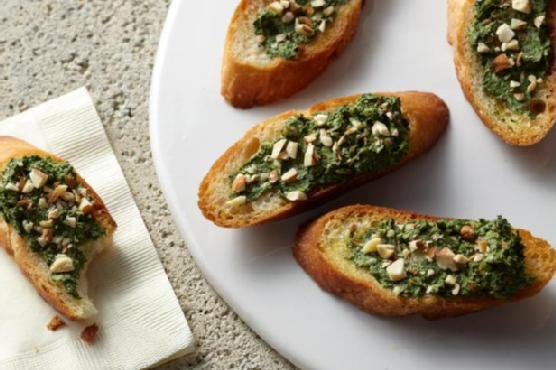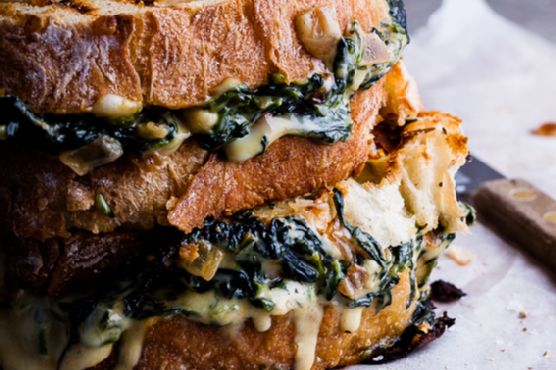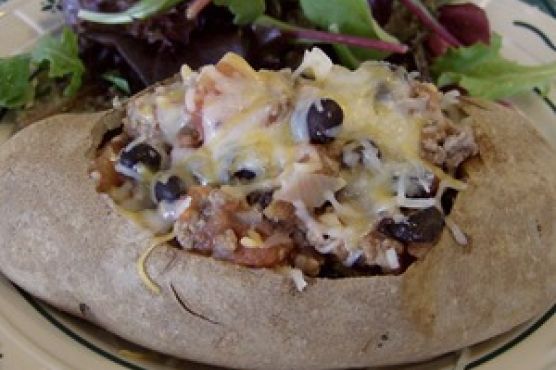Chicken, Sausage & Shrimp Gumbo
If you have approximately 45 minutes to spend in the kitchen, Chicken, Sausage & Shrimp Gumbo might be a great dairy free recipe to try. For $36.15 per serving, this recipe covers 92% of your daily requirements of vitamins and minerals. One serving contains 7875 calories, 508g of protein, and 557g of fat. This recipe serves 2. 2435 people have tried and liked this recipe. If you have eggs, vegetable shortening, fresh parsley, and a few other ingredients on hand, you can make it. It works well as an expensive main course. This recipe is typical of Cajun cuisine. It is brought to you by Bake Your Day. Overall, this recipe earns an excellent spoonacular score of 97%. If you like this recipe, take a look at these similar recipes: Chicken, Sausage and Shrimp Gumbo, Pork, Shrimp, and Chicken Sausage Gumbo, and Shrimp and Sausage Gumbo.
Servings: 2
Ingredients:
4-5 bay leaves per pot
1 package (about 8 stalks) celery, diced
8 pounds chicken (mixture of thighs and breasts), bone-in
12 (or more) eggs per pot
2 cups all-purpose flour
1/2 cup fresh parsley, chopped, divided
6 large green peppers, diced
3 pounds large onions, diced
2-3 tsp. crushed red pepper flakes per pot
Salt & pepper
3 pounds Polksa Kielbasa-style sausage, cut into half moons
4 pounds shrimp, deveined and tails removed
2 cups vegetable shortening
Equipment:
wooden spoon
frying pan
pot
Cooking instruction summary:
A few tips before you start:-wear an apron.-if you are by yourself, have all of the chopping and prep work complete before you start the roux, it will take all of your attention once you get started.-be patient with the roux process; it will take about an hour-and-a-half to reach the right color. to prep the soup pots:Fill two (20-quart) stock pots with salted water and bring them to a boil. for the roux:While the water comes to a boil, make the roux. Melt the shortening over medium heat in a cast-iron skillet until it's melted - don't rush this step. Stir occasionally with a wooden spoon. Once melted, add the flour until a sort-of paste forms. (Note: always add equal parts of flour to the shortening.)Stir the roux continuously with a wooden spoon and continue to stir as the roux changes color. It will start very light in color and will progress as it cooks (see image above for color progression). Cook the roux for about 90 minutes and watch the color change as you go. You will know it's finished when you reach a "dark chocolate" color. Be very patient - the roux burns very easily. to finish the gumbo:Once Roux is a dark chocolate color, turn off the heat, stand back, and carefully add a little of the boiling water to the roux to "loosen it up". Be very careful during this part - it will be a little messy too! The roux is very active at this time. Stir carefully to get as much of the water and roux to mix – then carefully pour half of the roux into one pot and half into the other pot. The water should now look like dirty dish water. (Gross, I know. Maybe hot chocolate is a better description?)Add the green peppers, onions, celery, parsley, bay leaves, crushed red pepper flakes, salt and pepper to the pot and stir. Add the chicken to both pots equally. Boil the gumbo to cook the chicken. Once the chicken is cooked, remove the chicken and let it cool. While chicken is cooling add the sausage equally to both pots. Once chicken is cooled, remove all of the meat and add it back to the pots. Designate one pot as the "shrimp" pot and one as just chicken & sausage. Add a little more chicken to the chicken and sausage pot. At this point, let the gumbo cool. The above steps are always done on the day before the gumbo is planned to be served and both pots are left outside to chill overnight. The longer the better. Once ready to serve, bring both pots back to a simmer, add the shrimp to the seafood pot just before serving and cook just until they are done, 5-10, then bring the heat down to the lowest setting.Gently “drop” in the eggs – about a dozen per pot (or more). Then add red crushed peppers to taste to both pots for a little added heat. Remove the bay leaves before serving; serve with hot white rice. Cassie's Notes:This recipe can easily be halved or quartered if you are feeding fewer people. If you need help dividing the recipe, please email me at bakeyourdayblog@gmail.com or use the contact form above. I am happy to help any way that I can.I would suggest having someone help to make this - it's not difficult, there are just lots of steps and the roux is time consuming. You can make both post with seafood if you wish, just divide all ingredients equally. In addition, you can add oysters, lump crab meat, etc. to make it more "seafood-y".
Step by step:
1. A few tips before you start:-wear an apron.-if you are by yourself, have all of the chopping and prep work complete before you start the roux, it will take all of your attention once you get started.-be patient with the roux process; it will take about an hour-and-a-half to reach the right color. to prep the soup pots:Fill two (20-quart) stock pots with salted water and bring them to a boil. for the roux:While the water comes to a boil, make the roux. Melt the shortening over medium heat in a cast-iron skillet until it's melted - don't rush this step. Stir occasionally with a wooden spoon. Once melted, add the flour until a sort-of paste forms. (Note: always add equal parts of flour to the shortening.)Stir the roux continuously with a wooden spoon and continue to stir as the roux changes color. It will start very light in color and will progress as it cooks (see image above for color progression). Cook the roux for about 90 minutes and watch the color change as you go. You will know it's finished when you reach a "dark chocolate" color. Be very patient - the roux burns very easily. to finish the gumbo:Once Roux is a dark chocolate color, turn off the heat, stand back, and carefully add a little of the boiling water to the roux to "loosen it up". Be very careful during this part - it will be a little messy too! The roux is very active at this time. Stir carefully to get as much of the water and roux to mix – then carefully pour half of the roux into one pot and half into the other pot. The water should now look like dirty dish water. (Gross, I know. Maybe hot chocolate is a better description?)
2. Add the green peppers, onions, celery, parsley, bay leaves, crushed red pepper flakes, salt and pepper to the pot and stir.
3. Add the chicken to both pots equally. Boil the gumbo to cook the chicken. Once the chicken is cooked, remove the chicken and let it cool. While chicken is cooling add the sausage equally to both pots. Once chicken is cooled, remove all of the meat and add it back to the pots. Designate one pot as the "shrimp" pot and one as just chicken & sausage.
4. Add a little more chicken to the chicken and sausage pot. At this point, let the gumbo cool. The above steps are always done on the day before the gumbo is planned to be served and both pots are left outside to chill overnight. The longer the better. Once ready to serve, bring both pots back to a simmer, add the shrimp to the seafood pot just before serving and cook just until they are done, 5-10, then bring the heat down to the lowest setting.Gently “drop” in the eggs – about a dozen per pot (or more). Then add red crushed peppers to taste to both pots for a little added heat.
5. Remove the bay leaves before serving; serve with hot white rice. Cassie's Notes:This recipe can easily be halved or quartered if you are feeding fewer people. If you need help dividing the recipe, please email me at bakeyourdayblog@gmail.com or use the contact form above. I am happy to help any way that I can.I would suggest having someone help to make this - it's not difficult, there are just lots of steps and the roux is time consuming. You can make both post with seafood if you wish, just divide all ingredients equally. In addition, you can add oysters, lump crab meat, etc. to make it more "seafood-y".
Nutrition Information:
covered percent of daily need















